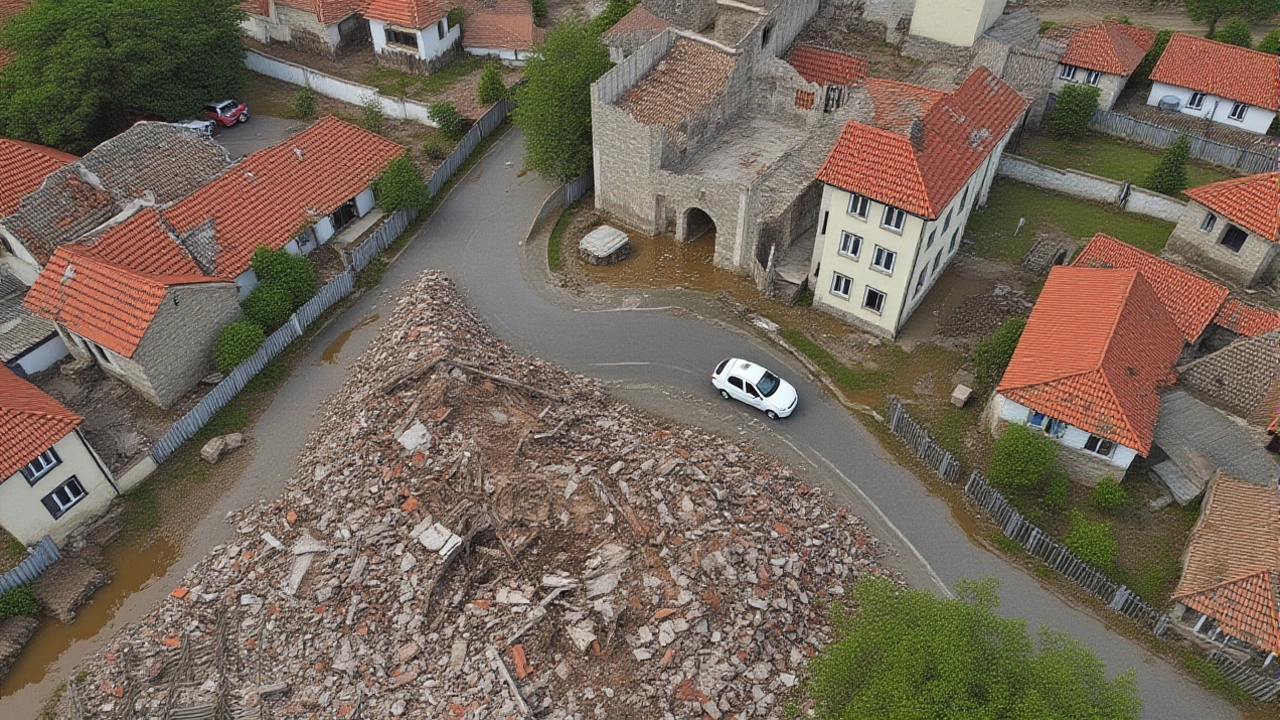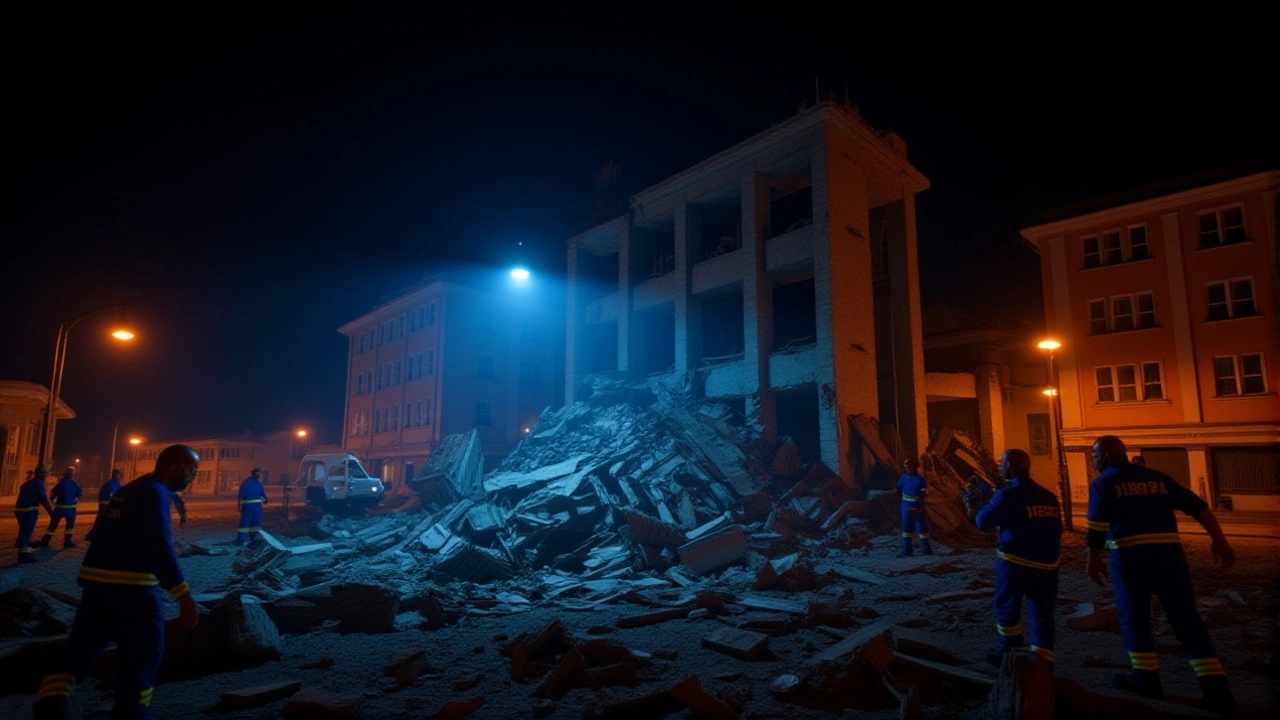A magnitude 6.1 earthquake jolted western Turkey on Monday night, October 27, 2025, collapsing at least three to five buildings in the town of Sindirgi — structures already weakened by a similar quake just three months earlier. The tremor struck at 22:48 local time (19:48 GMT), with its epicenter buried just 6 kilometers beneath the surface, according to Turkey’s Disaster and Emergency Management Authority (AFAD). Though no fatalities were confirmed, 22 people were injured, mostly from falls during the panic. The region, already on edge after the August quake, saw residents sleep in parks, mosques, and sports halls rather than risk returning indoors.
Second Major Shake in Three Months
This wasn’t the first time Sindirgi had been shaken to its core. On August 10, 2025, another magnitude 6.1 earthquake hit the exact same area — same depth, nearly same time of day. That one killed two people, injured over 50, and left 729 buildings too damaged to occupy. The August tremor also collapsed a minaret in Sindirgi and triggered a sinkhole near Eskişehir. Now, just 78 days later, the ground shook again. This time, the buildings that fell were the same ones still marked with red tags after August. They’d been declared unsafe — and mostly empty. That’s why, officials say, the death toll stayed zero. But the fear? That’s still very much alive.
Widespread Impact and Emergency Response
The shaking was felt as far away as Istanbul, 200 kilometers northeast, where people ran into streets and trains slowed to a crawl. Air traffic at both Istanbul Airport and Sabiha Gökçen International Airport was halted for runway inspections. Schools in Balikesir, Bursa, and Manisa closed for the day. Emergency teams from AFAD arrived within hours, accompanied by urban planners and structural engineers. Debris removal began immediately, but inspectors were cautious — they knew what happened last time. Many buildings that survived August were now cracked further. One local engineer told Haberturk, “We’re not just dealing with a quake. We’re dealing with a system that failed to protect people after the first one.”
Why This Region Keeps Shaking
Sindirgi sits on the North Anatolian Fault — a 1,200-kilometer-long fracture line that’s been moving for millions of years. It’s the same fault that ruptured in 1999, killing over 17,000 near İzmit. And it’s the same one that triggered the catastrophic February 2023 earthquake in southern Turkey and northern Syria — a 7.8-magnitude monster that killed more than 53,000 in Turkey alone. The region’s geology is a ticking clock. The fault doesn’t just move — it moves in stages. One quake relieves pressure here, then builds it up farther along the line. The August quake may have shifted stress toward Sindirgi. This October tremor? It could be the next domino.

Building Codes and Broken Trust
After the August quake, authorities arrested the owner and contractor of the Sindirgi building where an 82-year-old man died. They were charged with “causing death by negligence.” But arrests don’t rebuild homes. And inspections? They’re inconsistent. In the weeks after August, only 38% of the 729 damaged buildings had been fully evaluated, according to AFAD’s own internal report. Many were left standing — just barely — with warning signs flapping in the wind. Now, with October’s quake, those signs have become tragic prophecy. “We told people not to go back,” said Dogukan Koyuncu, Sindirgi’s district administrator. “But some returned anyway. They had nowhere else to go.”
What Comes Next
AFAD has deployed 15 additional damage assessment teams and is working with the Ministry of Environment, Urban Development, and Climate Change to map structural weaknesses across the region. A new building inspection protocol is expected by November 15. Meanwhile, the public is demanding answers. Why were those buildings still standing? Why weren’t they demolished? And if this fault keeps acting up, how many more times must people be forced to sleep outside? The government says it’s learning. But for residents of Sindirgi, the question isn’t about learning anymore. It’s about survival.
Frequently Asked Questions
Why did no one die in this earthquake when the August one killed two people?
The main reason is that the buildings that collapsed in October were already marked as unsafe after the August quake and had been largely vacated. While 22 people were injured — mostly from panic-related falls — the structures that killed people in August were still occupied. Authorities had issued evacuation orders, and many residents heeded them. This time, fewer people were inside the damaged buildings, reducing the risk of fatalities.
How often do earthquakes like this happen in western Turkey?
Western Turkey, especially along the North Anatolian Fault, experiences moderate to strong quakes every few years. Since 2020, there have been six quakes above magnitude 5.5 in Balikesir and surrounding provinces. The July 2025 quake (5.8) killed one person, and the August and October 2025 events were both magnitude 6.1 — rare for the same area within three months. This clustering suggests stress transfer along the fault line, not coincidence.
What’s different about this quake compared to the 2023 disaster?
The 2023 quake was a 7.8-magnitude megathrust event that ruptured multiple fault segments over 300 kilometers, destroying entire cities like Antakya. This October quake was shallow and localized, affecting a small region. But the danger lies in repetition: if the same towns keep getting hit, even smaller quakes become catastrophic due to poor rebuilding and weak enforcement of safety codes — not the magnitude alone.
Are air travel disruptions common after earthquakes in Turkey?
Yes. Major airports like Istanbul and Sabiha Gökçen routinely shut down after significant quakes to inspect runways for cracks or subsidence. Runways are built on layered soil and can shift slightly during tremors, risking aircraft safety. After the 2023 quake, flights were grounded for over 12 hours across 11 airports. This October, the closure lasted about four hours — shorter, but still a sign of how seriously infrastructure is treated after seismic events.
What’s being done to prevent future collapses in Sindirgi?
AFAD and the Ministry of Environment are launching a rapid inspection program targeting all buildings marked as damaged since August. By mid-November, they plan to demolish all structures deemed irreparable and begin temporary housing projects. A new law requiring mandatory seismic retrofitting for all public buildings is under review. But residents say trust is broken — many don’t believe promises until they see concrete action, like real demolition crews showing up.
Is this earthquake connected to the one in Syria in 2023?
Not directly. The 2023 quake was on the East Anatolian Fault, hundreds of kilometers southeast of Sindirgi. But both are part of Turkey’s broader seismic instability. The country straddles multiple active fault lines, and pressure from one rupture can influence stress patterns elsewhere. While not causally linked, the two events reflect a national pattern: weak enforcement of building codes, slow reconstruction, and repeated vulnerability in the same regions.






Written by Griffin Callahan
Hi, I'm Griffin Callahan, a sports enthusiast with a particular expertise in tennis. I've dedicated years to studying the game, both as a player and an analyst. My passion for tennis has led me to write extensively about the sport, covering everything from player profiles to match analyses. I love sharing my knowledge and insights with fellow tennis fans, and I'm always eager to engage in discussions about the sport we all love.
All posts: Griffin Callahan